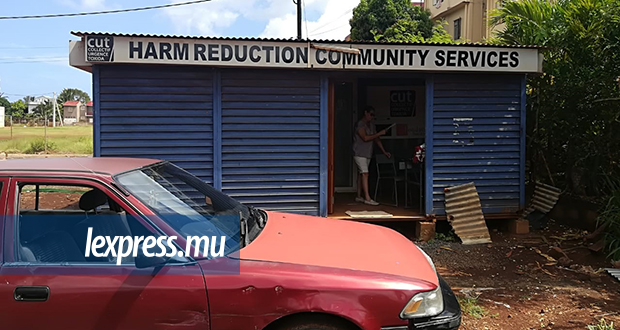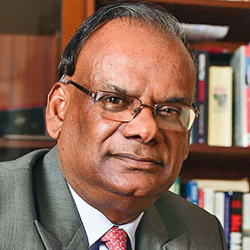Publicité
Are politics and prestige trumping sound finance and credible economics? (Part II)
Par
Partager cet article
Are politics and prestige trumping sound finance and credible economics? (Part II)

Behind the nice speeches regarding Metro Express, on the day of the laying of its foundation stone, hides the subject of financial implications. The author pursues the discussion on the project and its implications in this second part of his analysis. A last one will be published in the days to come.
How much commuting time saved, car ridership avoided and what level of rider comfort?
Proponents of the Metro Express (ME) argue that three of its important advantages are the significant reduction in travel time for existing commuters, the decrease in car ridership as auto users shift to the new mode and the level of rider comfort. The travel time saved and the vehicle cost savings are two critical elements used by the consultants to compute the economic benefits. If they do not materialise, the whole project risks financial and economic failure. As no detail has been given on ME speed, we have to benchmark on what is typically obtained elsewhere.
With 19 stations, it is not clear that it will “drastically reduce the commuting time for citizens”, as stated by Minister Bodha. It all depends on where one resides and works and for how long the ME stops at each station for alighting and boarding, especially at the four interchanges. Currently, passengers from Curepipe and Vacoas to Port-Louis benefit from express bus services without any or with very few stops.

It is unsure whether the travel time for ME passengers from Curepipe to Port-Louis would be shorter than an express bus service with fewer stops. 19 stations and stops at each of them may lead to lower average speed and longer travel time, thus reducing the very attraction of the system. Consider a commuter from the South to Port-Louis who travels by an express bus today. It could be very inconvenient as he would use both the bus mode and the ME. It is also unfair to compare time saved with the current congested system. It ought to be benchmarked on an alternative bus rapid transit that has the possibility of an express service between Curepipe and Port-Louis on a dedicated lane as it exists elsewhere.
There are many unanswered questions on the level of passenger comfort. Having to endure 18 stops between Curepipe and Port-Louis is surely no fun. No information has been given on seat comfort and legroom. Neither on the share of passengers likely travel in a standing position and, at times, in an overcrowded space during peak morning hours.
The quality of service and comfort of rides are critical to attract car users. Today, they drive in the comfort of their cars directly from home to work and back and listen to their channel of choice in their privacy and without noise or disturbance. Travel time should be measured door-to-door, taking into account each trip link, including time spent walking and waiting. With the ME, they would have to drive (or walk or use the bus feeders) from home to the ME station, park their vehicle, wait for the service, travel on board, stop at 18 stations, reach Port-Louis, find another transport to arrive at the office and back the same way in the afternoon. They would lose their privacy and have to bear with noise and distraction. How many car users will give up such multiple benefits to shift to the ME?
This predicament has been well summed up by a transport engineer who observed: “Who wants to pay a higher fare from Curepipe to Port-Louis, crammed six to eight passengers per square metre during peaks, with 80 % of passengers standing, travelling at a commercial speed of 20 kms per hour and completing the single journey in some one hour and 15 minutes and in a noisy environment?”
Granted, there might be some exaggeration in the statement. However, we heard of “affordable fare” and not a guarantee that the ME fare will be similar to current bus tariff. Furthermore, the public has the right to know what will happen in terms of passenger density at peak hours, the share of commuters standing, the commercial speed, the time spent at each stop and the trip duration. None of these key details have been revealed. A focused group discussion should be held to fully understand the responses of commuters and car users to the project instead of desk research and unrealistic assumptions on the behaviour of prospective patrons.
Negative financial internal rate of return and very low benefits to costs ratio?
Public transit systems are very expensive, with ME lines and related infrastructure costing billions of rupees. It is therefore key to accurately measure the costs and the benefits to help guide policymakers. While roads are congested in many places, they may not be crowded enough to warrant a ME because of low population density. The critical mass of traffic may be lacking with a population of 1.3 m only. Worst, only 50% of inhabitants will be covered by the ME. Previous studies show that ME is viable only if there are at the very least 15,000 passengers per hour, which is impossible along the Curepipe-Port-Louis corridor.
The key question is how many commuters will shift from the current bus system to the ME and the number of car users who will move to the new transport mode. The forecast seems to be around 165 000 passengers on a daily basis in its year of introduction, rising to 180,000 in subsequent years. These traffic flows are largely inadequate to justify the ME. Worse, the projected figures may not even be realistic if the service does not save significant time and is uncomfortable. For instance, how will the ME serve Réduit and Ébène (or the future Highlands administrative city) which are key generators of traffic? Will passengers for these regions have to change to the bus feeders at Rose-Hill which will make the proposition very unattractive and longer?
“The project would simply eat its own tail.”
Furthermore, long term demographic projections show that our population will significantly decline to around 950,000 on a no change policy on fertility and immigration. As a result, the number of children attending schools and universities will fall dramatically and the labour force will shrink considerably. The share of elderly will soar, implying lower mobility rates. These will lead to declining and not rising ridership as assumed in the study.
The ridership problem will be compounded by the unevenness of traffic flow during the day. Besides the peaks in the morning, there will not be enough commuters to use the mass transportation of the ME. And if supply is adjusted by reducing frequency and/ or lowering the number of trains, the huge fixed costs will have to be spread over fewer utilisation.
In addition to passenger revenues, ME offers the opportunity of generating non-fare income. This helps to diversify the revenue base and lower the overall funding requirement. Non-passenger revenues can come from a number of sources including advertising, rental of space at stations, parking charges and other activities. Some of these income are difficult to quantify and it is not clear that all these revenue rights will accrue to the concessionary.
All projections shown to me when I was in office and even those of 2014 invariably pointed to massive financial losses. The Internal Rate of Return was negative while the Benefits to Costs Ratio very low. The evaluation showed that the present value of fare and advertising revenues to total costs was only 58%, signifying a massive financial loss of 42% of the present value of costs. If a residual value of 22% of capital expenditure is retained, the loss comes down to 27% of costs. The consultants seem to use a high residual value to enhance the performance of the ME. Once installed, there is not much we can do with such a unique and non-tradable investment to generate residual value.
As a result of these huge losses, there is need for substantial Government support, either in terms of an outright grant to fund the project and/ or annual subsidies from the Budget to meet the gap between operating costs and revenues. I have not seen the latest business plan of 2016 with detailed forecasts of revenues and costs over a 25-year time frame and sensitivity analyses based on changes in ridership and other costs and benefits. However, not much could have changed in traffic demand. All projections must be made available to enlighten the public.
We have to be very vigilant, especiallyas one common pitfall is the tendency to underestimate time and costs, and to be wildly optimistic on forecasts of future passenger demand and other revenues during the decision making process. Many studies of new ME systems in developing countries show that costs have been well above and ridership well below forecasts made when the projects were approved. Precisely the stage we are in today!
There is also a huge controversy on the capital cost of the ME. Many are stunned at the revised project costs which appear on the low side when compared to similar investment in Singapore, Macau and India. We should know the cost savings options that have been proposed to scale down capital expenditure and whether they are realistic. For instance, has the ME been transformed from an elevated transport system to one that will operate on street level only? If yes, what would be the implications of such a change in technology and rights of way on competing use of scarce road space and the risks of accidents? For instance, just consider what would happen in terms of traffic congestion if part of the existing space (say in Quatre-Bornes) currently used by vehicles is reserved for the ME? The project would simply eat its own tail.
Are politics and prestige trumping sound finance and credible economics? (Part I)
Are politics and prestige trumping sound finance and credible economics? (PART III)
Publicité
Publicité
Les plus récents






